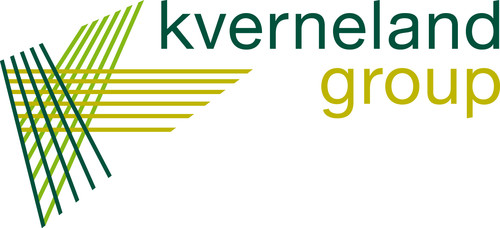
Myanmar, a promising market
The troubled political events have marked the history of the country and have long held back its development process. Today Myanmar stands out as a country with good prospects, in particular for the agricultural machinery sector, which must contribute to improving the productivity and quality of agriculture
Less than ten years ago, Myanmar, known by many as Burma, has gone from a military dictatorship to a democratic regime. The country’s economy, based largely on agriculture, has already experienced a real surge, with a growth rate of around 8% starting from 2011, the year of the first reforms implemented after the progressive concessions in favour of democracy and the various economic sectors began to be privatized. Today many operators are looking with interest at the opportunities offered by this country, even though so far the advantages have been almost all for Asian countries, starting with Singapore and China.
The economic revival of the country, where the isolation imposed by the military dictatorship had led to minimum levels of productivity and wealth, is proceeding in several directions and involves industry, energy resources, construction, and of course agriculture. This tumultuous transformation started from the political reforms that were launched, despite the political situation still being uncertain, even before the parliamentary elections of 2012, the first since the military dictatorship took office. Among them all, the five-year plan of investments in agriculture stands out. The goal is modernization and increased productivity, with mechanization at the centre.
But if this country has an enormous need for agricultural equipment, what is the real interest in Italian and, more generally, European products?
The report created for the Ice-Ita (Italian trade agency) - and the reports produced by the Internationalization and Foreign Markets Office of FederUnacoma, which has already carried out exploratory missions and initiated contacts in the country - include a number of precious recommendations to identify not only the opportunities, but also the effective strategies needed to capture the real needs of Burmese farmers and give the most appropriate answers.
Back in 2014, on the eve of the first real general elections and four years since the military regime began to cede powers to civil society politicians, 70% of the over 55 million inhabitants lived in rural areas. Myanmar has a very young population, given that the average age is just 27. The level of schooling is very good, given that almost 90% of the population has a basic education, but the economic conditions are disastrous for 15.8 million of them: a third of the inhabitants still live in poverty today. This is also due to most boys only completing compulsory school, so they only attend until the last year of elementary school, at 9-10 years old. Consequently, there are no figures with the necessary skills for higher level productivity.
Comparing it with other Asian countries (ASEAN: Association of southeast asian nations), the average income is by far the lowest. Lower than that of Cambodia and about half that of Vietnam.
Although other economic sectors have increased their incidence on gross domestic product over the past four years, agriculture still remains the dominant force. It goes without saying that the economic revival must start from the cultivated fields. And to boost agriculture it is necessary to modernize and mechanize the farms. But what are the sector’s specific needs?
In line with the entire Asian area, the production is dominated by rice. And if at the beginning of the last century, under the British domination, it was the largest exporter in the world, today it is in fifth place after Thailand, India, Vietnam and Pakistan. However, the amount of rice produced and the volume of exports do not correspond to proportionate financial revenues. And this is because the quality of the product is decidedly low and finds its outlet only on “discount” markets, as in much of the African continent. The modernization in this sector, therefore, must go in the direction of an improvement of the cultivated varieties, to target the most generous markets. This problem concerns rice and much less other crops, concentrated in the South of the country, such as corn, legumes, oilseeds, and sugar cane. There is, however, a positive primacy for sesame: with its 764 thousand tonnes, it is the second producer in the world, after Tanzania, which produces 805 thousand.
Despite the fact that agriculture represents the most important sector in economic terms and absorbs most of the workforce, cultivated land is still a minimal part of the potential. Furthermore, most farms are small or medium-sized at the most, and land ownership is very fragmented, with consequences not only on cultivation techniques but also on the financial capacity of farmers.
This set of reasons suggests that the demand is concentrated, at the moment, especially on small and low power machines. This should be a reason of interest for Italian producers, who in this segment continue to have the best cards to play. In 2017, the last year of available data, Italy is present with less than 1% of imported agricultural machinery (in terms of economic value), even though it has recovered compared to the previous three years, while China, which still remains in first place, has maintained a downward trend since 2013.
In any case, from 2010 to 2016, imports of agricultural machinery grew, with a sharp fall in 2017 due to cyclical reasons, rising from 191 million dollars in 2010 to 746 million in 2016.
What can lead the country to make a decisive breakthrough?
The factors identified from the very start by the Governments of the new democratic course are essentially two: financial incentives and professional training. They definitely need the money with which to buy the machines, but also the farmers who know how to use them and who are able to organize the activity in a modern way.
The reform that merged three ministries (Agriculture and Irrigation, Livestock and Fisheries, and Rural Development and Cooperatives) gave rise to a series of very targeted interventions. The ministry that emerged, the Moali (Ministry of Agriculture, Livestock and Irrigation) has recently launched a five-year investment plan called Ads (Agriculture Development Strategy), which plans interventions from 2018 to 2023 amounting to 1.4% of the national GDP for an estimated value of 5.1 billion euro. The Amd, Agriculture Mechanization Department, has the task of developing the presence of private enterprise in rural areas and increasing productivity. The Amd also surveyed the size of the fleet of machines in the country between 2013 and 2017, or a total of 67 thousand tractors, 20 thousand combines, and 971 thousand power tillers. And it estimated the main needs of farmers: 152,784 power tillers, 14,359 tractors and 30,986 combines.
A decisive incentive is that practically no duties are applied to the importation of agricultural equipment.
This is part of a very determined policy for opening up to foreign investments, in response to the cancellation of the sanctions that Western countries had imposed and maintained against the previous military regime. Immediately after the first reforms, in 2010/2011, there was a surge in foreign investments which went from € 237 million to € 16 billion. After the initial surge, the investments immediately scaled back towards an average of 5-6 billion.
The long term tool is the Mipp (Myanmar Investment Promotion Plan), designed to cover the period from 2016 to 2036. But at the moment, according to the data referring to the 2014-2018 period, foreign investors by far prefer other sectors, such as energy (26.4%) or transport and communications (25.7%) compared to agriculture, livestock and fishing (1.1%).
To create a more favourable and attractive situation, the Agricultural Mechanization Department (Amd) created centres called “tractor stations” in which many essential services are offered to local farmers.
There are 119 tractor stations all over the country and services they offer include continuing education on the use of modern equipment and cultivation techniques, the organization of demonstration days for technological innovations (veritable mechanization exhibitions) directly in the field, land consolidation and land reclamation, especially to repair the inevitable damages caused by the monsoons. In addition, it provides a service of equipment rental and instalment sales with subsidized interest. Equipment rental is a crucial function in a country where the small size of the farms makes the purchase of agricultural equipment uneconomical in most cases.
The AMD even runs a walking tractors factory, distributed under the Leyar brand, meeting a widespread need. The factory was financed by China, which is the country from which most of the agricultural equipment historically comes.
Not everyone imagines that the driving force to transform Burmese farmers into modern entrepreneurs can be cellular telephony. Mobile phones are a modern technology, constantly evolving, which however has a speed of penetration that cannot be compared to any other. It is also a versatile technology that, for a long time, no longer serves only to make phone calls, but is able to upset business models and create new ones.
In Myanmar, the spread of mobile phones has increased from 500 thousand in 2012 to 28.1 million in March 2015. Three advantages for farmers can derive from this sudden spread: the possibility of identifying the best time for purchases and sales, planning activities in the field according to the most accurate weather forecasts and, finally, using a low financial transaction platform cost. According to analysts, these elements can reduce the use of credit and increase margins for those who live in the countryside.
This is demonstrated by the fact that there are already 19 operators of online financial services in Myanmar.








